Related Research Articles

26 Proserpina is a main-belt asteroid discovered by German astronomer R. Luther on May 5, 1853. It is named after the Roman goddess Proserpina, the daughter of Ceres and the Queen of the Underworld. Another main-belt asteroid, 399 Persephone, discovered in 1895, is named after her Greek counterpart. Its historical symbol was a star inside a pomegranate; it is in the pipeline for Unicode 17.0 as U+1CECD .

57 Mnemosyne is a large main belt asteroid. It is a stony S-type asteroid in composition. This object was discovered by Robert Luther on 22 September 1859 in Düsseldorf. Its name was chosen by Martin Hoek, the director of the Utrecht Observatory, in reference to Mnemosyne, a Titaness in Greek mythology.

67 Asia is a large main belt asteroid. It was discovered by English astronomer N. R. Pogson on April 17, 1861, from the Madras Observatory. Pogson chose the name to refer both to Asia, a Titaness in Greek mythology, and to the continent of Asia, because the asteroid was the first to be discovered from that continent.
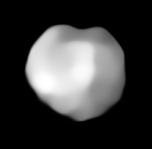
89 Julia is a large main-belt asteroid that was discovered by French astronomer Édouard Stephan on 6 August 1866. This was first of his two asteroid discoveries; the other was 91 Aegina. 89 Julia is believed to be named after Saint Julia of Corsica. A stellar occultation by Julia was observed on 20 December 1985.
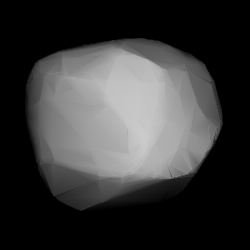
159 Aemilia is a large main-belt asteroid. Aemilia was discovered by the French brothers Paul Henry and Prosper Henry on January 26, 1876. The credit for this discovery was given to Paul. It is probably named after the Via Aemilia, a Roman road in Italy that runs from Piacenza to Rimini.
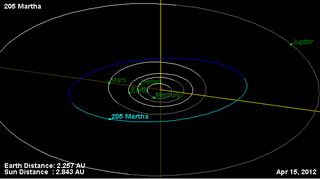
205 Martha is a large main belt asteroid. It is a dark, primitive carbonaceous C-type asteroid. This object was discovered by Johann Palisa on 13 October 1879, in Pola and was named after Martha, a woman in the New Testament.
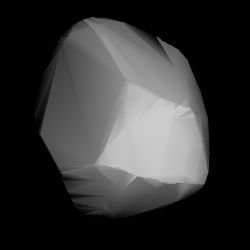
217 Eudora is a large Main belt asteroid. It was discovered by French (Corsican) astronomer J. Coggia on August 30, 1880, in Marseilles, France. It was his fourth asteroid discovery and is named after Eudora, a Hyad in Greek mythology.

225 Henrietta is a very large outer main-belt asteroid. It was discovered by Austrian astronomer Johann Palisa on April 19, 1882, in Vienna and named after Henrietta, wife of astronomer Pierre J. C. Janssen. The asteroid is orbiting at a distance of 3.39 AU from the Sun with a period of 6.24 years and an eccentricity (ovalness) of 0.26. The orbital plane is inclined at an angle of 20.9° to the plane of the ecliptic. 225 Henrietta belongs to Cybele group of asteroids and is probably in a 4:7 orbital resonance with the planet Jupiter.
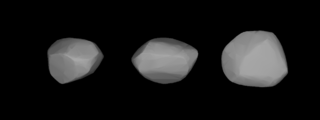
242 Kriemhild is a main belt asteroid that was discovered by Austrian astronomer Johann Palisa on 22 September 1884 in Vienna and was named after Kriemhild, a mythological Germanic princess, by Moriz von Kuffner, a Viennese industrialist and sponsor of astronomy.
256 Walpurga is a large Main belt asteroid. It was discovered by Johann Palisa on 3 April 1886 in Vienna and was named after Saint Walburga.

340 Eduarda is a main belt asteroid that was discovered by German astronomer Max Wolf on 25 September 1892 in Heidelberg. It was named after German banker and amateur astronomer Heinrich Eduard von Lade.

381 Myrrha is a main-belt asteroid that was discovered by the French astronomer Auguste Charlois on January 10, 1894, in Nice. It has been classified as a C-type asteroid and is most likely composed of carbonaceous material.
563 Suleika is a minor planet orbiting the Sun. Previously designated as 1905 QK, it was discovered by German astronomer Paul Götz on 6 April 1905 from Heidelberg, Germany.
618 Elfriede is a minor planet orbiting the Sun. On July 24, 2013, it occulted the magnitude 12.8 star 2UCAC 23949304, over parts of Mexico and southwestern United States.

665 Sabine is a minor planet orbiting the Sun that was discovered by German astronomer Wilhelm Lorenz on July 22, 1908.

747 Winchester is an asteroid, a minor planet orbiting the Sun. It was discovered in 1913, and is named after the town in which it was discovered, Winchester, Massachusetts, in the USA.
760 Massinga is a large background asteroid from the outer regions of the asteroid belt, approximately 70 kilometers in diameter. It was discovered by German astronomer Franz Kaiser at the Heidelberg Observatory on 28 August 1913. The stony S-type asteroid has a rotation period of 10.7 hours and is somewhat elongated in shape. It was named in memory of Adam Massinger (1888–1914), a German astronomer at Heidelberg who was killed in World War I.
799 Gudula is a minor planet orbiting the Sun discovered by German astronomer Karl Wilhelm Reinmuth on 9 March 1915 at the Heidelberg observatory.
947 Monterosa is a minor planet orbiting the Sun.
4175 Billbaum, provisional designation 1985 GX, is a background asteroid from the central regions of the asteroid belt, approximately 9 kilometers in diameter. It was discovered on 15 April 1985, by American astronomer Edward Bowell at the Anderson Mesa Station of the Lowell Observatory near Flagstaff, Arizona. The uncommon L-type asteroid has a short rotation period of 2.73 hours and was named for American astronomer William A. Baum.
References
- ↑ (in Indonesian) http://langitselatan.com/2011/01/12/nama-nama-indonesia-pun-tertera-di-angkasa/
- 1 2 Yeomans, Donald K., "536 Merapi", JPL Small-Body Database Browser, NASA Jet Propulsion Laboratory , retrieved 8 May 2016.
- 1 2 3 Carry, B. (December 2012), "Density of asteroids", Planetary and Space Science, 73 (1): 98–118, arXiv: 1203.4336 , Bibcode:2012P&SS...73...98C, doi:10.1016/j.pss.2012.03.009, S2CID 119226456. See Table 1.
- ↑ "Numbered Minor Planets 1–5000", Discovery Circumstances, IAU Minor Planet center, retrieved 7 April 2013.
- ↑ Ditteon, Richard; Hawkins, Scot (September 2007), "Asteroid Lightcurve Analysis at the Oakley Observatory - October-November 2006", The Minor Planet Bulletin, 34 (3): 59–64, Bibcode:2007MPBu...34...59D.